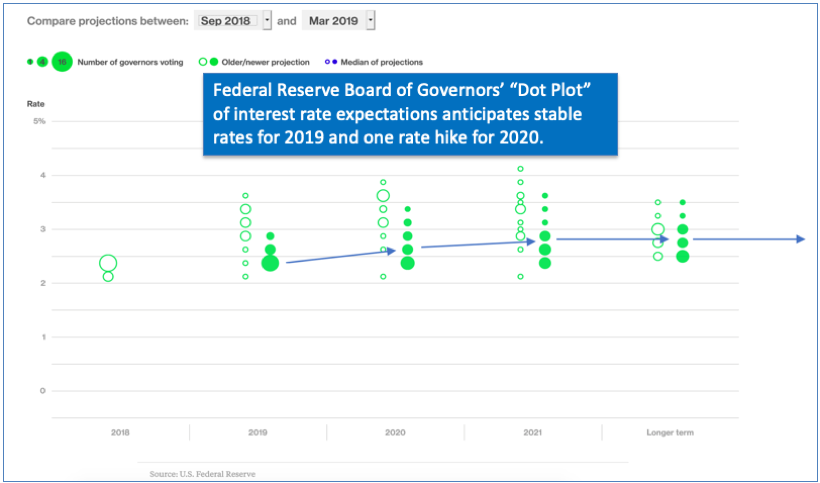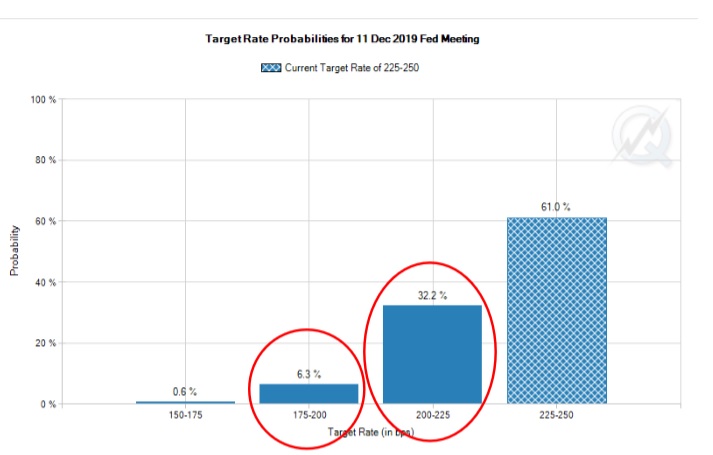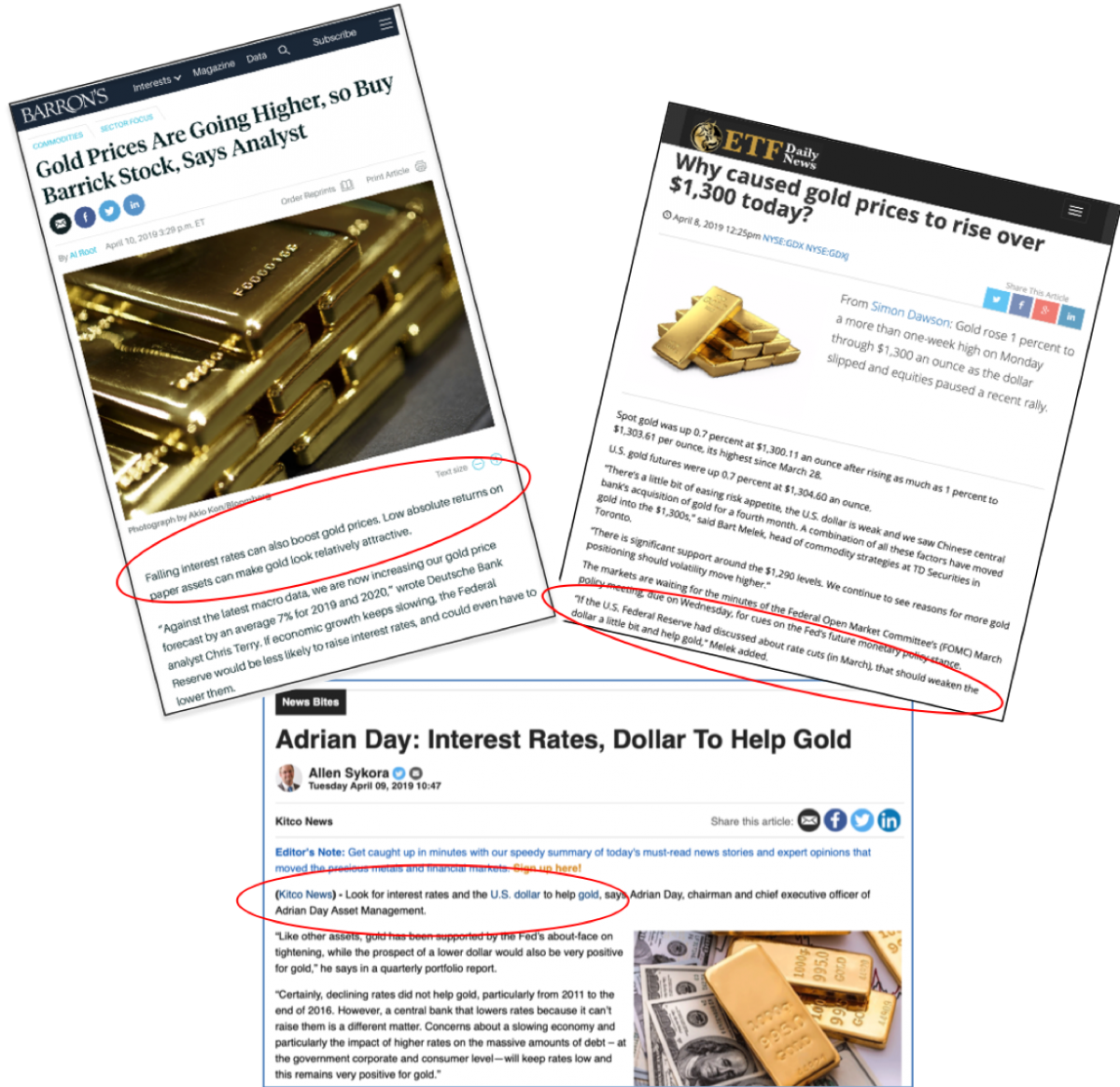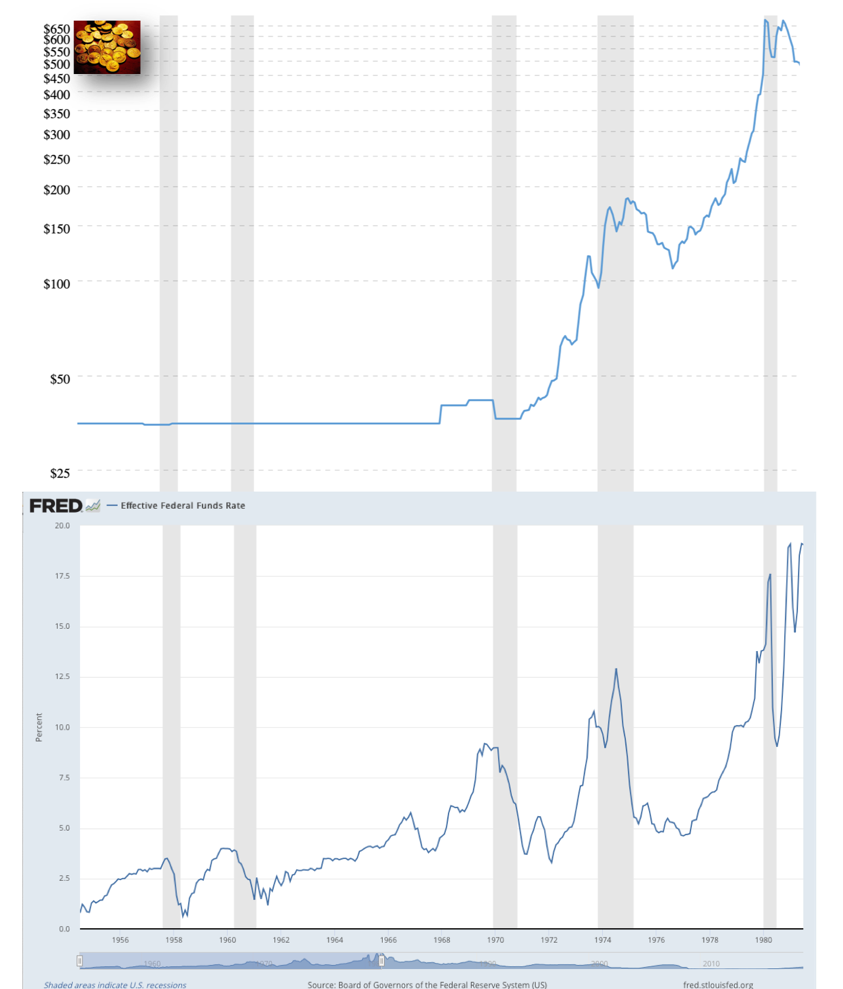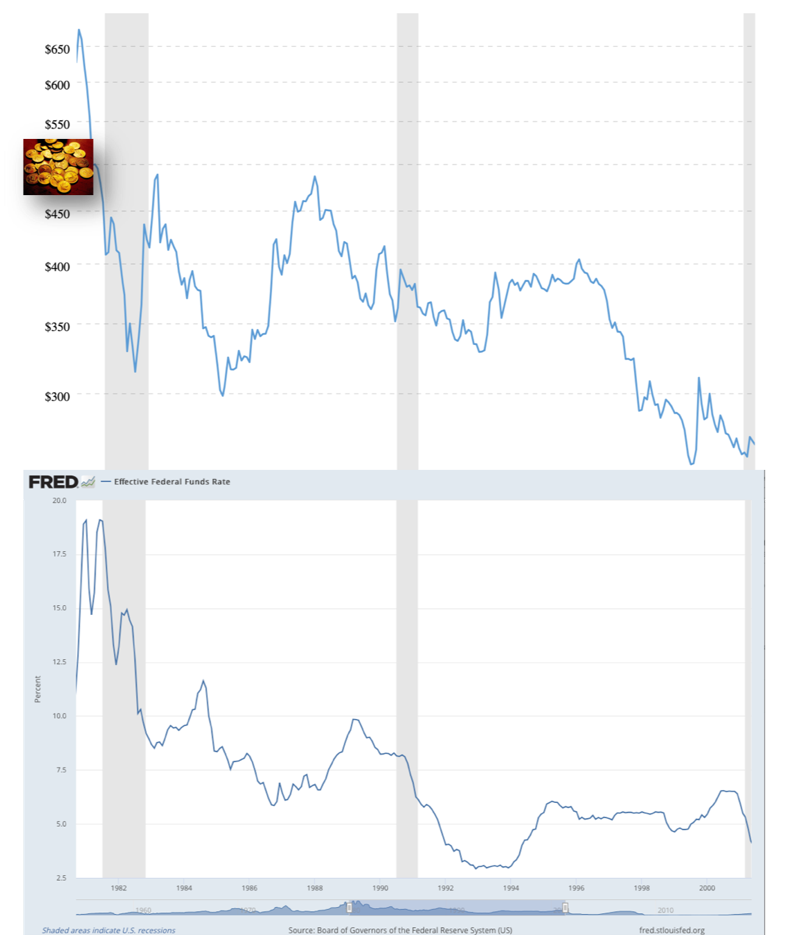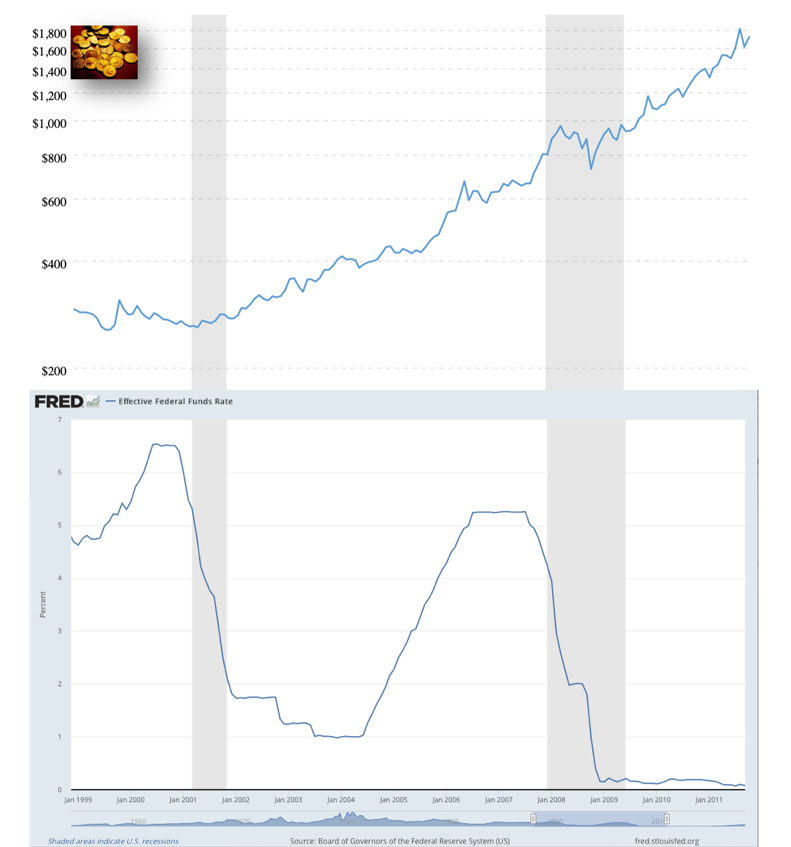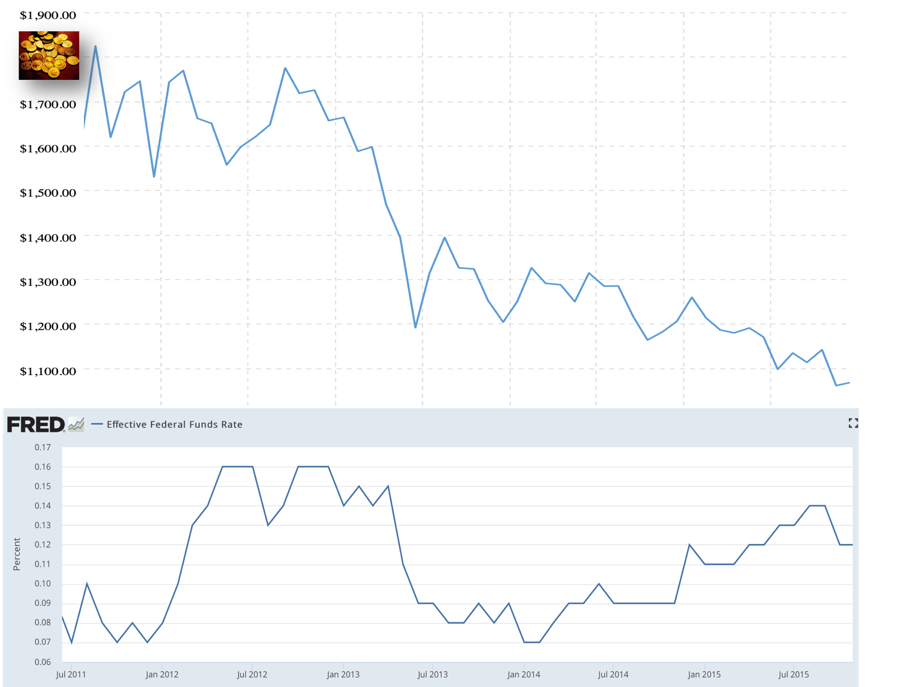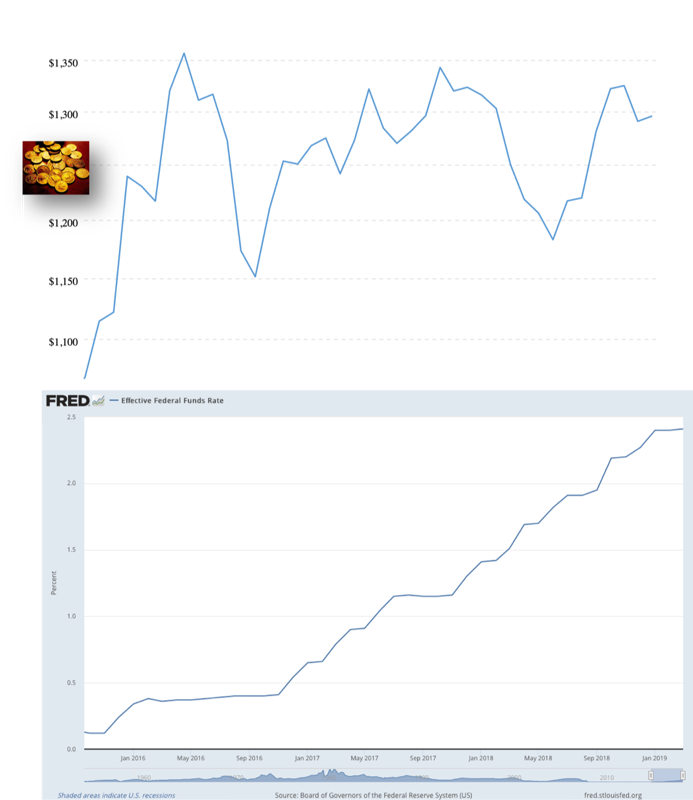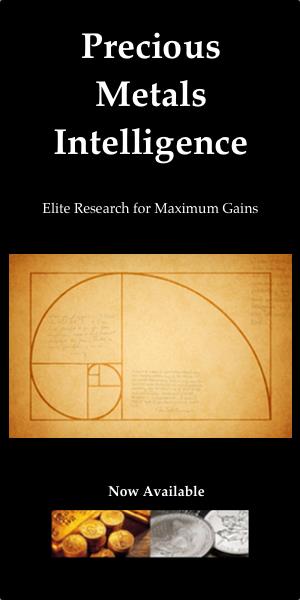Gold Price Forecast: Gold Lower Even As Fed Loses Credibility
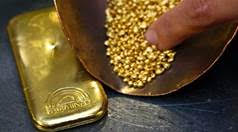
The Federal Reserve is on the verge of a credibility problem: the market does not believe the central bank at its word.
Let us rewind: at the January 30, 2019 Fed meeting, the central bank wavered on its 2015 – 2018 interest rate hike campaign and began to hint that it would at least pause for the intermediate-term on further increases. This was a significant departure from the 2015 - 2018 period, which saw rates rise from zero to the present 2.25% - 2.50% in three years.
Specifically, the new language used by the Fed at the January meeting stated: “In light of global economic and financial developments and muted inflation pressures, the Committee will be patient as it determines what future adjustments to the target range for the federal funds rate may be appropriate to support these outcomes [emphasis added].”
Now let us fast-forward to the present. Last Wednesday the Fed released minutes from its March 19 – 20 policy meeting. Notable statements include:
- The Fed may “judge it appropriate to raise the target range for the federal funds rate modestly later this year.”
- “A majority of participants expected that the evolution of the economic outlook and risks to the outlook would likely warrant leaving the target range unchanged for the remainder of the year.”
Further evidence that the Fed still expects to raise rates can be verified by revisiting the Fed Board of Governors’ “dot plot” of interest rate expectations. Updated below, we see the consensus expectation remains for stable interest rates to last through 2019, followed by one interest rate hike in 2020. This would bring the short-term Federal Funds rate to a target range of 2.50% - 2.75%, from the current 2.25% - 2.50%:
In sum, we now see that the Federal Reserve expects either flat rates or moderate increases to interest rates during the remainder of 2019, with the probability of one further hike in 2020.
The Market Disbelieves the Fed
The problem is that the market does not believe the Fed. Let us compare the above central bank projections of stable to rising interest rates with the market’s expectations. Note below that the futures market is pricing in rate cuts later in the year:
This red highlights show that the market is now pricing in a nearly one-third chance of an interest rate cut by the December 2019 Fed meeting, which would bring the target rate down to a range of 2.00% - 2.25%. Further, the market perceives a 6.3% chance of two full cuts, which would bring the rate down to 1.75% - 2.00%.
We do not have futures data available beyond January 2020, but suffice it to say the market is pricing in the opposite of what the Federal Reserve is stating over the next two years.
It is said that markets like good news, and markets can adjust to bad news. What markets hate most is uncertainty.
And uncertainty is exactly what we see here in the divergence between the Fed and the futures market.
Gold’s Response to the Fed Change
As a reminder, the mainstream consensus is that lower interest rates are positive for precious metals prices. The theory goes that gold is a non-interest bearing asset, and thus competes better against other assets in a low-rate environment. We see this rhetoric nearly universally in the mainstream financial press:
Yet let us examine the gold price itself since the significant change in Fed language from the January 30 meeting, which referenced a pause in the 2015 - present rate increase campaign.
Note that as a net sum, gold is lower since the significant policy change announcement:
As we showed above, the market does not believe the Fed will raise again, and is instead pricing in rate cuts.
So why is gold lower?
Because the mainstream consensus of how gold responds to changes in interest rate policy is wrong.
Gold and Fed-Controlled Interest Rates
In the freely-traded era for gold on the international market (post-1971 and the closing of the dollar’s convertibility to gold by President Nixon), gold has performed notably better during periods of rising interest rates compared to falling interest rates.
Let us examine several notable periods from history to show this point, and then return to a focus on the present.
For reference, there have been two bull markets in gold-trading history:
- 1971 – 1980
- 1999 – 2011
And two bear markets in gold-trading history:
- 1980 – 1999
- 2011 – (2015 or present, depending on how low gold ultimately falls)
1971 – 1980
Gold’s first and strongest bull market lasted for nine years during the inflationary 1970’s. Gold broke the dollar standard established under the Bretton Woods accord of 1944, and rose over 2,400% from $35 toward its peak near $850 in the year 1980.
What was the backdrop for this advance?
Rising interest rates.
Below we show the Fed-controlled rates during this period (bottom), with the monthly closing price of gold immediately above (top). Recessions are shaded.
Note the clear correlation between rising rates and rising gold prices during this, the strongest gold market in history.
Even short-term advances and retracements in gold corresponded closely with the same for interest rates: for example, the interim gold decline from near $200 in 1974 down to $100 in 1976 corresponded with a decline in rates from above 12.5% to below 5.0%.
Then as rates recovered into the 1980 peak, so did gold.
Indeed: rising interest rates, rising gold.
1980 – 1999
During gold’s bear market from over $850 in 1980 down to $252 in 1999, interest rates fell the entire time.
Let us remember, the mainstream opinion is that falling rates are positive for precious metals.
Where is the evidence? Should not two decades of falling rates be sufficient for gold to respond positively?
1999 – 2011
Gold’s second bull market lasted for 12 years, and featured a price rise from $252 in 1999 up to $1,923 by 2011. The final percentage gain for gold paled to the 1970’s gain, rising 660% compared to 2,400%
The period was marked by both inflationary bubbles (dot-com bubble of the late-90’s, housing bubble of the mid-2000’s) as well as deflationary crashes (NASDAQ crash 2000 – 2002, worldwide financial crisis 2007 – 2009).
Gold rose steadily the entire time; in fact, never having a single losing year from 2001 – 2011.
And interest rates? They oscillated.
Gold rose both during periods of rising rates, and during periods of falling rates. The data for this second gold bull market is shown below:
2011 – 2015
If – and that is a big question – we are to consider gold’s bear market following the 2011 peak to have ended as of 2015, let us examine the relative price data of Fed-controlled interest rates versus gold during this, the second bear market in gold trading history:
What we see above is interest rates that were pinned near zero at multi-generational lows, with gold falling by nearly 50% during this period.
So again – low interest rates were not positive for gold, as mainstream analysts would have us believe.
2015 – Present
Even despite recent weakness, gold is still up $250 from the 2015 bottom at $1,045 per ounce to $1,295 as this article is going to press.
The backdrop for the 3+ year rise?
Rising interest rates.
Why the Mainstream Consensus is Wrong
In attempting to compare gold to other interest-bearing assets – and thereby proclaiming that gold should rise in a low-interest rate environment – mainstream analysts are missing a critical point:
They are not evaluating why the Federal Reserve lowers interest rates in the first place.
We maintain that the Fed holds no crystal ball – it is a reactive, not a proactive institution. Further, it responds to incoming data mainly as to the health of its member institutions and then adjusts its policies accordingly.
Thus, when would the Fed logically decide to raise interest rates?
Only when inflation is a threat for its member banks, and by extension the broader economy.
As we remember from the 2,400% increase in gold during the 1970’s: gold performs best during an inflationary environment.
This is why we see the typical chain reaction of inflation à rising Fed interest rates à higher gold prices. Not the opposite, as commonly believed.
Takeaway on Fed-Controlled Interest Rates and Gold
There is a divide between Fed policy and market expectations.
The Fed claims that they will remain steady on rates throughout 2019, and with one further increase in 2020.
The market believes otherwise, and is already pricing in one rate cut by end-2019, with the possibility of further cuts into 2020.
Gold appears to be following the market’s expectations, as it has been lower since the January 30 Fed announcement.
Despite mainstream myth, gold prices have performed poorly during falling rate periods throughout most of history.
Since the January 30 Federal Reserve policy change from “hike mode” to “pause mode”, gold is weaker again.
Precious metals investors need to seriously consider the weight of evidence as per correlations between Fed hiking and cutting cycles since 1971, and gold prices.
If rates top now as the market expects, or even in 2020 as the Fed itself predicts, these correlations suggest gold should be under pressure for some time to come.
*********

